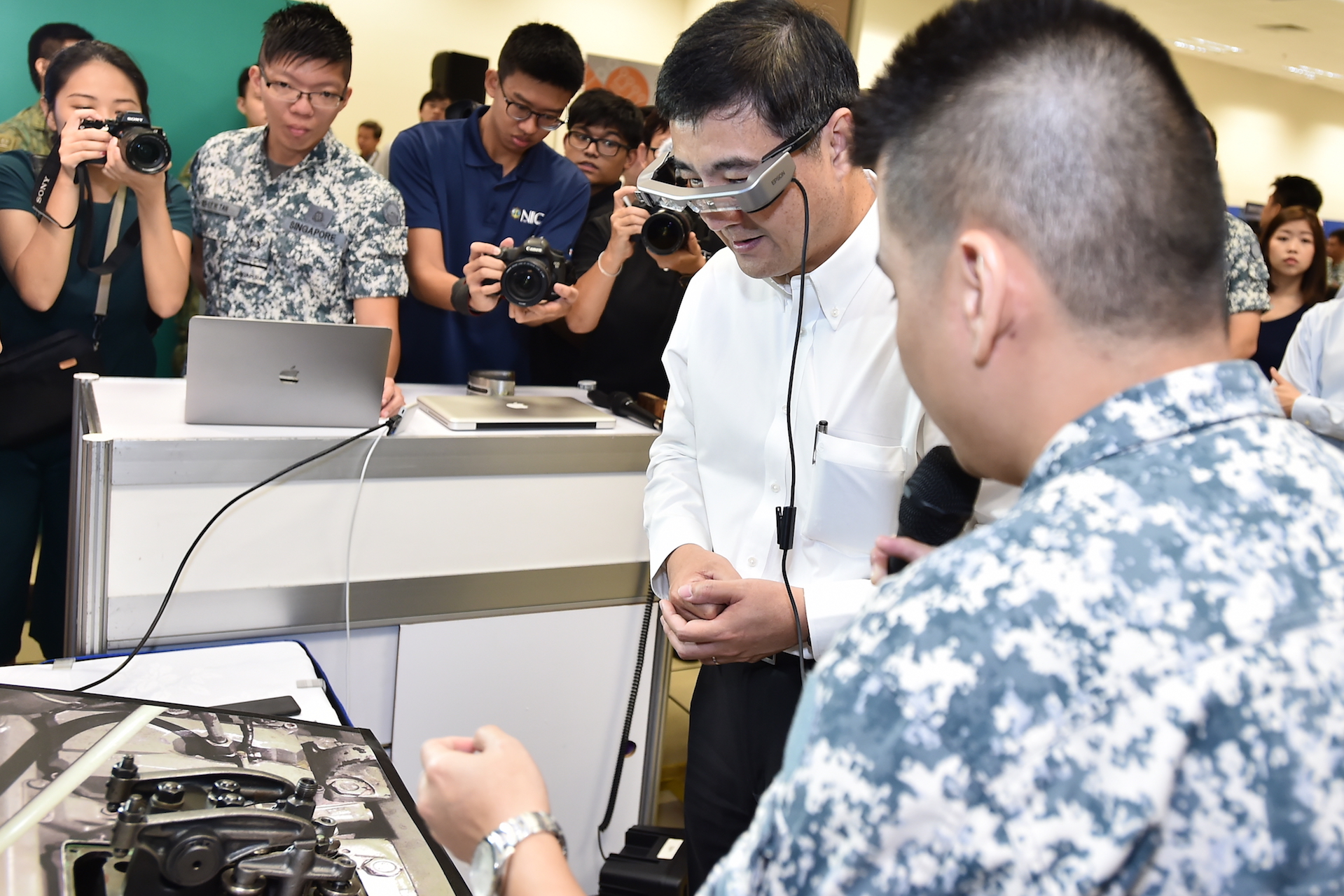EMPOWERING THE SAF TO INNOVATE
// REPORT Teo Jing Ting
// PHOTOS Tan Yong Quan
To foster experimentation, the Ministry of Defence (MINDEF) and the Singapore Armed Forces (SAF) have designed a safe-to-fail environment for innovators to tinker with their projects.
The Live Digital Testbed (LDTB) – a first for MINDEF and the SAF – is a physical space for innovators to test and improve on their projects.
Established in collaboration with the Defence Science and Technology Agency (DSTA), it provides users with a digital foundation to build mobile applications and tap on specialised services such as machine learning and data analytics. These services will also allow innovators to carry out rapid prototyping.
The RSS Singapura – Changi Naval Base has been designated the LDTB. Since last October, the base has seen the trialling of 10 different projects across areas such as human resources, safety, training, engineering, finance, base access, medical, fitness and green buildings.
This was announced by Senior Minister of State for Defence Heng Chee How, who officiated at the inaugural MINDEF/SAF Digital Innovation Day at RSS Singapura – Changi Naval Base on 15 May.
Emphasising the need to leverage digital technology, Mr Heng said that it was important for MINDEF and the SAF to cultivate an organisational culture that places digital innovation at its core.
"(We) have put in place a three-pronged digital strategy, to drive digital innovation, invest in digital transformation and enable agile system delivery within MINDEF and the SAF.
"These digital strategies aim to create a smart workplace and more effective workforce within MINDEF, enhance the National Service (NS) experience and community engagement of Singaporeans, and improve the SAF's data-enabled warfighting capabilities to more effectively safeguard our security."
One of the projects currently being trialled within the LDTB is the Republic of Singapore Navy's (RSN's) Smart Base Access.
Comprising a two-factor authentication system that allows for mobile pre-registration of visitors, it utilises a combination of facial recognition and digital identification to simplify the entry process. When in base, geo-tagging and video analytics technology would also enable security troopers to monitor movement and enforce security zones accordingly.
Calling it a "fuss-free experience", Mr Heng said that this new base access system, when fully implemented, would free up precious manpower to be redeployed for other tasks.
Among the 22 digital technology-driven projects showcased at the event was the Smart In-Camp Training (ICT) App, a one-stop platform that consolidates information such as attendance, training records and weather conditions from multiple sources.
This would allow NS Commanders and Operationally-Ready National Servicemen to be constantly updated of their training and performance statuses, and facilitate smoother ICT planning.
Encouraging servicemen to do their part, Mr Heng said: "I urge all of us to think big, start small and act fast, because change can only come about if we are willing to try."
He added that he hoped the showcased projects would inspire servicemen to think about how digital technologies can improve their work processes and engagement with their peers.
Apart from the exhibition, there were some 30 innovation-related seminars hosted by speakers from MINDEF and the SAF, as well as industry leaders. Held on 14 and 15 May, the MINDEF/SAF Digital Innovation Day also included several hands-on digital learning workshops.










